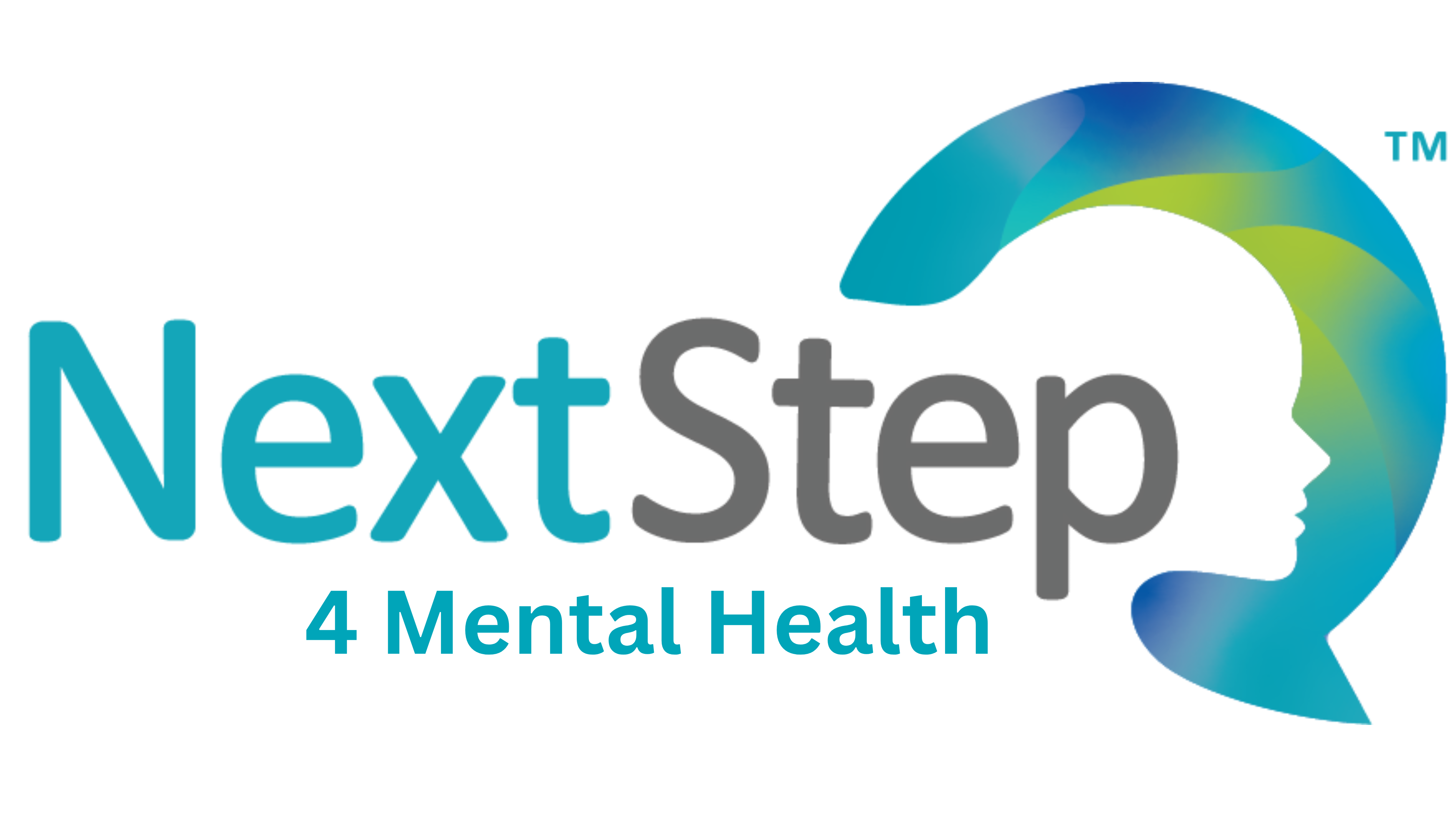
Preparing for Telehealth: What Parents Need to Know
As parents, you’ve no doubt taken your child to dentist appointments, eye doctor appointments, and annual physical exams. These routine visits are similar: arrive at the office, fill out paperwork, wait in the lobby until your name is called. But what about preparing for telehealth?
But what happens when your appointments are virtual? What do parents need to know?
Here at NextStep2MentalHealth, our multidisciplinary team is proud to offer a variety of mental health services through telehealth – and not just for adults. Children and teens can benefit from virtual care.
Below, we share five tips that parents can use to get their children ready for a virtual session.
5 Tips to Remember When Preparing for Telehealth
If your teen already uses video calling apps like FaceTime, Zoom, Google Hangouts, or Skype, then he or she already has a good idea of what a telehealth session is like. For younger children — especially those who don’t use much technology — a virtual appointment can be intimidating. Setting aside the technology, some children may feel a little nervous before an appointment, especially if they’re meeting a new provider for the first time. They may wonder what happens in therapy or what happens during an evaluation.
If your child is scheduled for an upcoming virtual appointment, it’s a good idea to prepare your child ahead of time — especially if it’s their first time experiencing therapy or an evaluation.
1. Know what type of session your child is having

At Next Step 2 Mental Health, your child can receive a variety of services remotely. This includes therapy, coaching, new patient appointments, and more.
When you know what type of service your child is receiving, it’s easier to answer their questions.
Reminder: Virtual sessions are only for non-life-threatening visits. If your child is experiencing a mental health emergency, call 9-1-1 or head to the nearest emergency room. You may also use the new 24/7 crisis hotline by calling 988 for those in crisis.
2. Gather important information before the session starts
Before your appointment begins, make sure you have:
- A list of your children’s current medications
- Your child’s medical history, including allergies, weight, and any previous diagnoses
- A list of questions that your child has (if any)
- A list of questions that you have (if any)
Depending on what type of session your child is having, you might want to write down a list of concerning symptoms that you want to address. Be prepared to answer a variety of questions, including how the symptoms have been occurring, when the symptoms are most severe, and any other related details.
3. Find the perfect location

This is one of the most important steps to having a successful telehealth session. The ideal location is quiet, well-lit, and free from distractions. Consider setting up on the dining room table or in a den. The camera should be at eye-level for your child.
If you have pets or other children, make sure they are situated elsewhere so you can focus on the session too.
It’s also important that no other children or family members can listen in during your child’s session. It’s important your child has privacy during their call.
4. Start with an introduction
You might have a telehealth session with a therapist or pediatrician that you’ve seen dozens of times. But if your child is seeing a new provider, you’ll start with introductions. Let your child know ahead of time if he’ll be meeting a new doctor so he can prepare mentally for the meeting. During the meeting, one of our providers will start by sharing his or her name and title. At this time, encourage your child to introduce himself too! After your child introduces himself, you’ll be asked to confirm a few details too. You’ll already have completed a treatment consent form, but you’ll still confirm your child’s name, date of birth, etc.
Tip: If your child is nervous (which is normal!), practice introductions beforehand!
5. Know your next steps
Before your child’s virtual appointment comes to an end, make sure that you understand the provider’s diagnosis, instructions, and/or advice.
Tip: Keep a piece of paper or notepad nearby so you can take notes during the session, if needed. Don’t hesitate to ask for clarification! We want to make sure your session is valuable and helpful.
Questions? We’re Just a Call or Click Away
At NextStep2MentalHealth, we’re happy to provide comprehensive psychiatric care and therapy for your children. Whether your child has anxiety, depression, or ADHD, we don’t want him or her to miss out on valuable sessions, and we are here to make sure your telehealth experience is successful.
Questions about preparing for telehealth? We’re just a call or click away. Give our Louisville, Kentucky mental health clinic a call at 502-907-5908 or request an appointment here.
Learn More
Boost Your Mental Health with These At-Home Activities
Whether you’re stuck at home quarantining after a COVID exposure or you’re simply settling in for a weekend at home, it’s always good to have a list of at-home activities that boost your mental health.
In this blog, we’ve curated a list of at-home activities that support your mental wellness.

Reading
Reading provides many benefits.
“Reading can even relax your body by lowering your heart rate and easing the tension in your muscles. A 2009 study at the University of Sussex found that reading can reduce stress by up to 68%.” (NAMI California)
Reading also provides a healthy escape from life’s daily stress. Unwind after a busy day with your favorite story or favorite characters. Reading also boosts empathy and understanding.
Need inspiration: Explore GoodRead’s list of relaxing books
Reading can be particularly helpful for individuals struggling with hard or sensitive issues. According to NAMI California, reading about similar situations can help teens work through tough challenges, including issues with bullying.
While reading your favorite fictional story can help you relax, there is also merit in reading non-fiction books, including those about particular mental health conditions.
Need inspiration: Read the top 13 mental health books of 2022
Gardening
Just because you’re at home doesn’t mean you can’t go outside! Spending time outside boosts your mood (and serves up a nice dose of vitamin D), but you can further support mental wellness by gardening. Gardening:
- Boosts your mood
- Boosts your self-esteem
- Improves your attention span
- Provides a good workout (and exercise helps alleviate symptoms of many different mental health conditions)
- Encourages social interaction
Get more gardening tips here.
Music & Family Time
Both listening to music and spending time with friends and family can support mental wellness. So why not combine both of these elements? You can:
- Watch a concert on TV
- Play your favorite music
- Set up an at-home karaoke session
- Play musical chairs (if you have little children at home who would like to play)
- Play music while you make dinner or while you eat
- Write a song to express yourself
Music can reduce your stress and lift your mood.
Movies
Granted, not all movies support mental wellness. That being said, watching certain movies can have a positive effect on your mental health.
Watching a funny movie can make you laugh and laughing releases feel-good endorphins.
But what about sad movies?
“Similar to laughter, crying could activate the release of endorphins, according to a 2016 study. Dramatic movies could increase feelings of gratitude and reduce feelings of isolation. They could also act as a reminder that everyone experiences struggles of their own and invite viewers to reflect on their own problems.” (PsychCentral)
Games
Games, especially strategy games, can boost your mood, improve working memory, and support emotional regulation. Playing board games can be a good opportunity to talk and bond with children and teens — especially if they have a hard time opening up.
Getting the Help You Need
Reading, listening to music, reading, spending time with family, and playing games are all good wholesome activities that support your mental wellness, but sometimes you just need more support. Here at NextStep2MentalHealth, our multidisciplinary team provides comprehensive care for anxiety, depression, bipolar disorder, OCD, PTSD, and more. Whether you need therapy, coaching, or medication management, we can help you get the comprehensive treatment you need.
To get started, schedule an appointment today.
Learn More
Social Anxiety in a Post-Pandemic World
Warning Signs that Your Social Anxiety Is Spiraling Out of Control
How do you know if your social anxiety is being exacerbated by the return to “normal”? Below are four signs that should be aware of:
Are you:
- Experiencing an increase in the intensity of fear?
- Experiencing a sense of dread or doom?
- Canceling or avoiding in-person events? (including work and social commitments)
- Noticing an increase in physical symptoms such as stomach distress, shaking, heart palpitations, panic attacks, or blushing?
5 Ways to Support Your Partner with Social Anxiety Disorder
If you’re spouse or partner is struggling with social anxiety disorder, you might wonder how you can best support him or her during this time of transition. Below are five tips to support and encourage your partner.
1. Offer encouragement.
Offer encouragement and support, but learn about the right kind of encouragement to offer that neither accommodates (i.e., enables) the self-isolation nor criticizes the partner for their behaviors. You may benefit from support groups or from talking to your spouse’s therapist — we’ll cover this more in the next tip.
2. Encourage professional support.
“The good news is that social anxiety is treatable. Medication and specialized forms of therapy such as Cognitive Behavioral Therapy and Exposure and Response Prevention have been shown to be extremely helpful in reducing, and sometimes eliminating social anxiety,” Dr. Briscoe reminds us.
Consider this: Setup an appointment to visit with your partner’s specialized social anxiety therapist to discuss how you can support the work that your partner and therapist are engaged in. Therapists providing CBT with persons with social anxiety are generally very happy to involve loved ones in their clients’ care, and provide some very helpful recommendations for you to assist and support the process of healing.
A board-certified psychiatrist should be able to recommend and direct you to a therapist or psychologist in your local community with experience and expertise in treating social anxiety, and provide medication to help alleviate symptoms if necessary.
3. Seek out a support group for yourself.
You might also consider finding a support group dedicated to spouses of individuals with social anxiety. You can find support groups for individuals or spouses of individuals with social anxiety.
4. Seek to learn everything you possibly can about social anxiety disorder.
Here are a few reputable resources:
- National Alliance on Mental Health – Provides some excellent recommendations for family members/partners of persons struggling with all types of anxiety disorders. You can also learn what to do and what not to do.
- National Institute of Health – General information/education on social anxiety.
- National Alliance on Mental Health (support) – Source of support for family members/partners of persons struggling with social anxiety and other anxiety disorders. Potential resource for support groups for family members/partners.
What to Do If You Notice the Symptoms of Social Anxiety

The signs and symptoms of social anxiety vary from person to person, but in general, symptoms include:
- Staying away from or avoiding places where there are a lot of other people
- Finding it difficult to spend time around other people, especially if you don’t already know them
- Feeling very self-conscious in front of others, to the point that it can impact your social and personal relationships
- Feeling embarrassed easily
- Physical symptoms including blushing, sweating, rapid heart beat, trembling and shaking
- Feeling nauseous
Note that these symptoms may increase when engaged in social settings such as giving a presentation at work, talking to coworkers, attending social events, meetings, etc. If you notice any of these signs and are struggling to overcome them, it may be a good time to seek professional help.
Explore Your Next Steps
Untreated social anxiety can make it difficult to perform well (or comfortably) at work or in social settings. However, treatment can help you feel more comfortable. At NextStep 2 Mental Health, we know that the pandemic can profoundly impact your mental health. We provide comprehensive social anxiety treatment — pandemic or not. Whether you’ve already been diagnosed or you are just now starting to see the signs, we can help you feel better. Give us a call at our Louisville, Kentucky office at 502-339-2442, or send us a message to request more information.
You can also request an appointment with our convenient scheduling tool here.
About Dr. Briscoe
 Dr. Brian Briscoe is a board-certified psychiatrist and the medical director of adult programs. Dr. Briscoe was voted a “Top Doctor” by Louisville Magazine. You can make an appointment with Dr. Briscoe here .
Dr. Brian Briscoe is a board-certified psychiatrist and the medical director of adult programs. Dr. Briscoe was voted a “Top Doctor” by Louisville Magazine. You can make an appointment with Dr. Briscoe here .
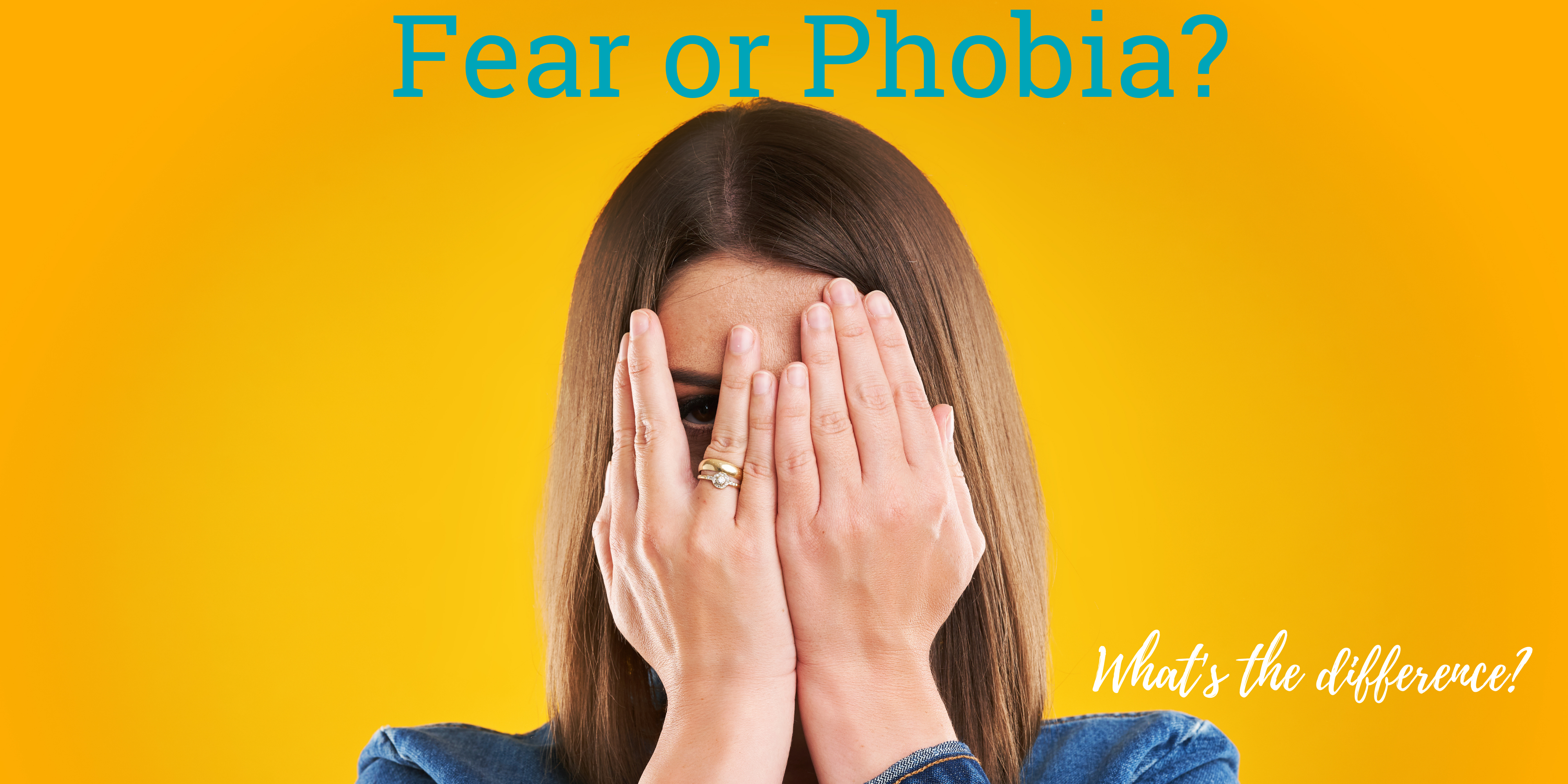
Fear and Phobia: What’s the Difference?
A phobia is an aberrant or extreme fear of something. In some cases, the fear is so intense that it interrupts normal activities.
Learn More
9 New Year’s Resolutions that Put Your Mental Health First
2021 is right around the corner … finally! Are you making resolutions this year? Here are nine New Year’s Resolutions that put your mental health first.
Catch Your Zzz’s
It’s no secret that getting enough sleep supports your physical well-being, but it also affects your mental health too. Insufficient sleep can increase your risk of a number of unfavorable conditions, including heart disease, type 2 diabetes, and depression. Some psychiatric conditions (including bipolar disorder, anxiety disorders, and depression) can cause sleep problems. In addition, insufficient sleep can even exacerbate the symptoms of many mental conditions including depression, anxiety disorders, and bipolar disorder.
So how much sleep do you need? It depends on your age. The National Sleep Foundation suggests the following:
| Your Age | Recommended Hours of Sleep from the NSF | |
|---|---|---|
| Newborn | 0–3 months | 14–17 hours |
| Infant | 4–12 months | 12–16 hours |
| Toddler | 1–2 years | 11–14 hours |
| Preschool | 3–5 years | 10–13 hours |
| Elementary School Age | 6–12 years | 9–12 hours |
| Teen | 13–18 years | 8–10 |
| Adult | 18–60 years | 7–9 hours |
| 61–64 years | 7–9 hours | |
| 65 years and older | 7–8 hours | |
If you make “practice better sleep hygiene” as one of your New Year’s resolutions, here are a few tips you can use to help you accomplish this:
- Try to go to bed at the same time every night
- Avoid blue lights for 1-2 hours before bed (You can learn more about warm lights in this post: Do Warm Lights Help You Sleep Better?)
- Sleep in a cool, dark room (cool refers to a few degrees cooler than room temperature)
- Exercise during the day
- Spend some time in the sunshine (it helps to reset your circadian rhythm)
Exercise More

Exercise not only helps you sleep better at night, but it also supports your mental health in other ways too. Studies show that aerobic exercises help to reduce symptoms of anxiety and depression. Exercise also:
- Boosts your mood
- Reduces stress
- Reduces the likelihood of social withdrawal
- Boosts self-confidence
Examples of aerobic exercise include running, jogging, dancing, walking, hiking, swimming, and playing tennis.
If you make “exercise more” as your resolution, remember that exercise regimens don’t have to be arduous. There are plenty of fun ways to add more physical activity into your daily routine. Even walking your dog an extra 10 minutes can add up over time.
Find a New Hobby
Did you know that hobbies are good for your mental health? According to the Australian Government Health Department, hobbies can boost self-confidence, promote feelings of relaxation, reduce stress, and improve overall happiness.
Here are a few examples of popular hobbies:
- Sports and exercise
- Music
- Art, including drawing, sculpting, painting
- Knitting and crocheting
- Baking
- Reading
- Journaling
- Gardening
- Fishing
You don’t need to be an expert to participate in a hobby. It’s about spending time doing an activity you enjoy.
Meditate
According to Mental Health America, meditating is great for your mental health. It can reduce stress, reduce the symptoms of anxiety and depression, and even help lessen chronic pain.
If “meditate more” is your resolution, you can find many ways to include more meditations into your weekly routine:
- Apps like Headspace
- Books
- Online guided meditations
Get a Planner
Getting organized can help you organize thoughts and reduce anxiety from last-minute scrambling or missed appointments. Keeping a planner can also support your mental health because you can stay on top of appointments, medication schedules, etc. Using a planner (either paper or through an app) can help you stay organized when your life — and health — feel overwhelming.
Volunteer
Did you know that volunteering also supports your mental health? According to the Mayo Clinic Health System, volunteering decreases the risk of depression.
If “volunteer more” is one of your New Year’s resolutions this year, you don’t even have to leave home. Here is a list of 20+ virtual volunteer opportunities.
Get Back to Nature

Spending time in nature can also support your mental health. Sunshine and fresh air can reset your circadian rhythm, which helps you get enough sleep. The experts at Harvard suggest that even 20 minutes spent outside can make a big difference.
If “spend time in nature” is one of your resolutions, read this article to explore a few ideas for spending time outside.
Develop an Attitude of Gratitude
Giving thanks and cultivating an attitude of gratitude can increase your happiness, according to the experts at Harvard.
If “be more thankful” is one of your New Year’s resolutions, you can boost your gratitude by writing more thank you notes, meditating, and keeping a gratitude journal (and re-reading on days you feel blue).
How to Keep a Gratitude Journal (for You and Your Kids!)
Keeping a gratitude journal is a great way to combat anxious thoughts. In fact, writing in a gratitude journal is shown to improve emotional resilience and reduce stress. There are many ways to keep a gratitude journal, but here are some tips:
- Journal first thing in the morning to start the day on a positive note
- End the day with a quick reflection about things you were grateful for over the course of the day
- If your child can’t write yet, she or he can draw pictures instead
You can download our free printable Gratitude Journal. Print out the journal and let your child explore the concept of gratitude. With 50+ pages, your child will have nearly two months of journaling!
Practice More Positive Self-Talk
How you talk to yourself matters, and incorporating more positive self-talk can make a big difference.
If “practice more positive self-talk” is one of your New Year’s resolutions, here are ten to get you started:
- I am capable and strong.
- Attempting to do X took courage, and I am proud of myself for trying.
- Even though this wasn’t the outcome I anticipated, I learned a lot about myself during this process.
- I am proud of how far I have already come even if I still have a ways to go.
- I can get through this.
- Tomorrow is another opportunity to try again, and I can utilize the lessons I learned from today.
- I will do my best.
- I can’t control what other people say, do, or think, but I can control my thoughts, words, and actions.
- This is an opportunity for me to try a new way to do X.
- I am learning from this situation, and I can grow as a person.
The Best New Year’s Resolution: Ask for Help When You Need It
Even with all of these resolutions, it’s not always enough. The best thing you can to do support your mental health is to ask for help if you need it. As a multidisciplinary practice, we can support a variety of mental health conditions with therapy, medication, lifestyle changes, coaching, and more.
Here at Next Step 2 Mental Health, we provide comprehensive mental health care for adults (and children too!). We’re just a call or click away. Call 502-339-2442 or send us a message to request more information.
Learn More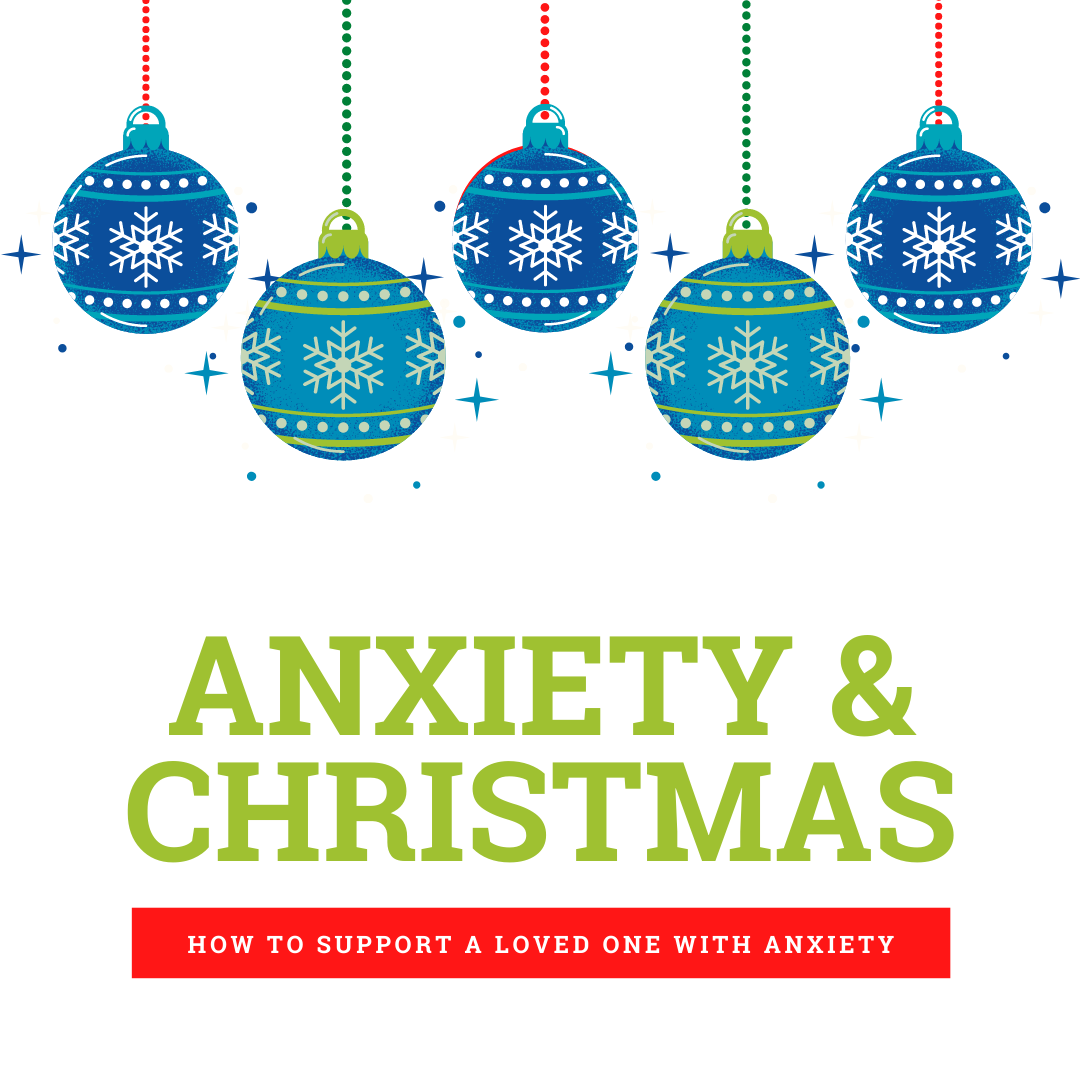
Anxiety at Christmas: What Your Loved One Wants You to Know about Anxiety
A United Kingdom-based mental health charity, Mind, explored the connection between anxiety and the holiday season. Let’s take a look at a few stats that highlight how the festive season impacts people living with anxiety:
- Three out of four people who have a diagnosed anxiety disorder report trouble sleeping around the holidays
- More than 60% of the surveyed participants reported a panic attack during the holiday season
- 36% of participants admitted to engaging in self-harm to cope, and another 52% considered self-harm
With these stats in mind, we want to shed light on how the holidays can impact those with anxiety – and what you can do to make the holidays a little easier for them.
1. Opening Gifts
Giving and receiving gifts is a hallmark of the Christmas season. It can be an exciting, joyous time, but for some people with anxiety, opening gifts can be a trigger. For example, it can be very uncomfortable to have all eyes on you as you open up a present. You’re on the spot. You might worry if you react the right way. What if you don’t love the gift? What if they don’t love the gift? Even if you love opening gifts, it’s important to recognize that not all people love the spotlight.
How to support a loved one with anxiety: If you know that opening gifts is anxiety-producing, ask your loved one how they’d like to handle the situation. For example, everyone opening their own gifts at the same time can be much less stressful than watching each person one at a time open presents.
2. Socializing at Christmas Parties
Granted this year’s holiday party schedule is likely very different due to the pandemic, there are still plenty of ways to socialize at Christmas: social distancing get-togethers, virtual parties via Zoom, or increased phone calls with extended families and friends.
Socializing – whether that’s in person or virtually – can be overwhelming for those with social anxiety.
How to support a loved one with anxiety: Avoiding all socializing (whether that’s at Christmas or any other time of the year) is tempting for those with social anxiety disorder, but avoidance isn’t helpful in the long run. Gently encourage your loved one to participate, and how ask how you can support them. Some people may find that arriving early to a get-together is easier because you can greet people one-at-a-time as they arrive rather than all at once.
3. Christmas Dinner Stress

The pressure is on! Planning and cooking a Christmas dinner can be stressful. It’s not uncommon to lose sleep over planning a big meal. Planning the menu can be overwhelming especially if Uncle Tim doesn’t eat meat and Aunt Peg is doing keto – trying to please everyone can be a nightmare! The Irish have a term for this: Christmas Day Syndrome.
How to support a loved one with anxiety: Be understanding of the task at hand. Not everyone asks for help, so don’t hesitate to offer your help first. Doing as much prep as you can early can also help alleviate headaches.
4. Financial Stress
Financial strain can be a big source of anxiety, and the holidays can really stretch the budget. Between gifts, decorations, and food for Christmas parties, it can be overwhelming to see so much money spent so quickly.
How to support a loved one with anxiety: If you and your partner are sharing a budget for Christmas gifts, you can eliminate some strain by setting a budget and sticking with it. A budget can help eliminate the surprise and worry associated with a large credit card bill after Christmas.
5. Christmas Busy-ness
The weeks and days leading up to Christmas can be very busy. Between working regular hours, preparing for family gatherings, shopping, decorating, wrapping presents – there’s a lot going on! Busy schedules can cause stress. In fact, 81% of the UK Mind survey participants noted that most anxiety was triggered by the increased stress load.
How to support a loved one with anxiety: Help your loved divvy up any tasks to help lighten their load. Remind your loved one that you don’t have to do every single holiday tradition if it causing more stress than joy.
Anxiety Isn’t Just “Overly Stressed”
Anxiety can be very personal; what triggers one person doesn’t necessarily trigger another person. If your loved one is dealing with increased anxiety during Christmas, remember it’s not that he or she hates the holiday. The best thing you can do to support a loved one is to be considerate of how they feel even if you don’t understand why. Let your loved one know that you are there to talk. You can also take the time to learn more about anxiety disorders. Anxiety can be a severe, debilitating condition. While stress can trigger anxiety, it is more than just being “overly sensitive” or “worrying too much”.
Anxiety at Christmas … and Beyond the Holidays
Here at Next Step 2 Mental Health, we want to help you feel better no matter what time of year it is. If you or a loved one are struggling with anxiety, we encourage you to seek the help you deserve. Remember, seeking help is always a sign of strength. We take a multidisciplinary approach when it comes to managing anxiety. From medication management to therapy (including CBT) to online courses, we are with you every step of your journey.
Give us a call at our Louisville, Kentucky office at 502-339-2442, or send us a message to request more information.
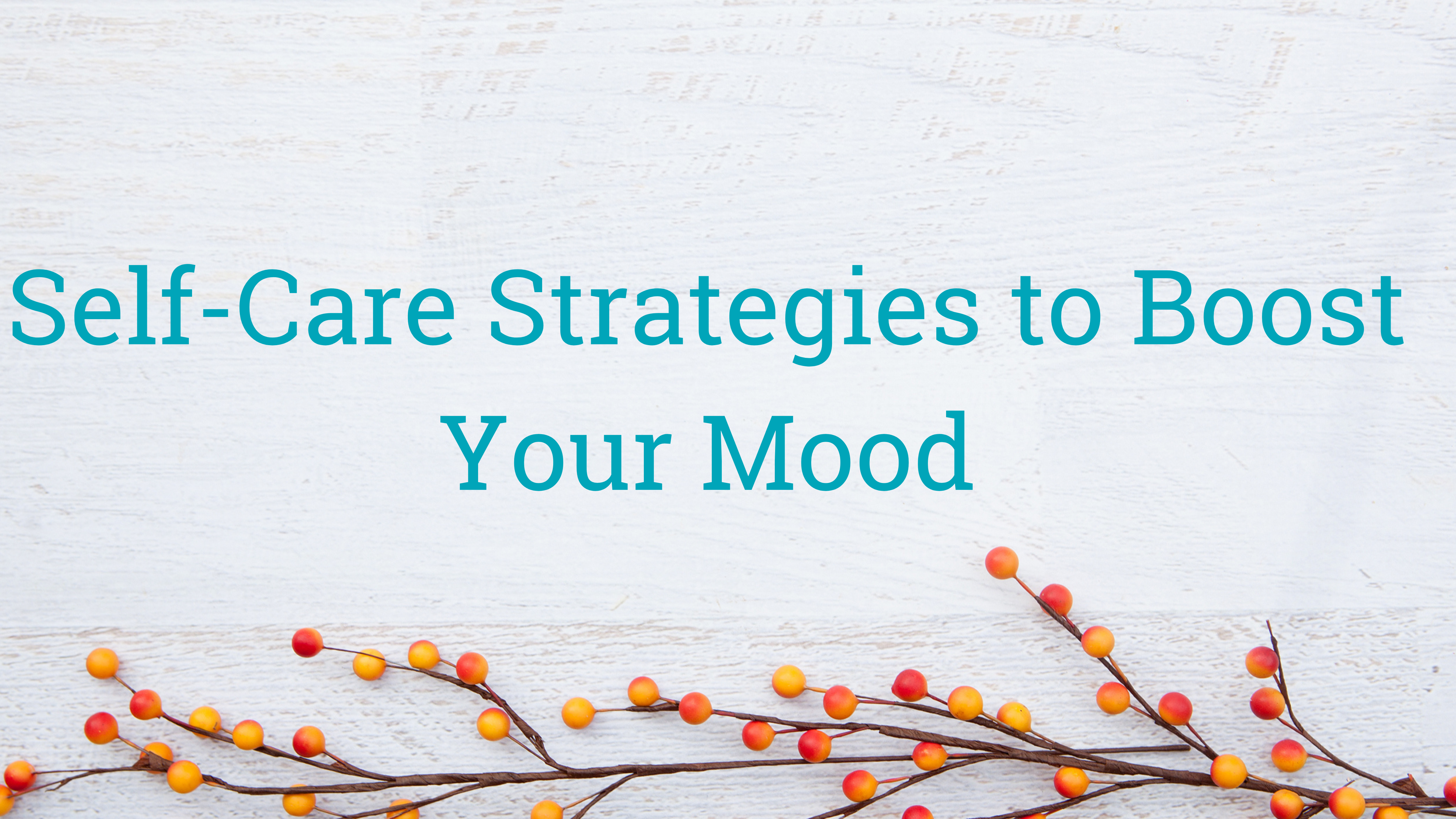
10 Self-Care Ideas to Try If You’re Feeling Sad This Thanksgiving
Holidays can be a time of joy and togetherness, but sometimes holidays can be stressful or even sad. Spending the holiday alone may be the result of conflicting schedules, familial issues, or the financial strain of traveling. This year, however, the COVID-19 pandemic has halted Thanksgiving plans across the globe. Regardless of what’s having you feel a little blue this Thanksgiving, it’s important to focus on the things you are grateful for — and that includes yourself too! Taking time to practice self-care during the holidays can help make your day a little easier.
1. Make Time for Your Favorite Things
Thanksgiving is just one day, but between all the cleaning, cooking, prepping snacks, decorating, it can consume your weekly agenda. This Thanksgiving, allow time for some of your favorite activities. Even it’s just 30 minutes of knitting, working on a new art project, or reading your favorite book — your favorite things can help you feel good. You can also schedule in fun quarantine-safe activities so your household can join in on the fun too. Check out this list of 17 Thanksgiving Day ideas here.
2. Reframe Your Mindset
If you’re missing out on Thanksgiving with your family — because of travel restrictions or work obligations — try to reframe your mindset. Instead of viewing the day as a missed opportunity, try to see your day as a solo staycation, or even as a day of rest and relaxation.
Bottom line: try to look at the day as one of a gained opportunity (for some well-deserved R&R) rather than a loss.
3. Treat Yourself to Your Favorite Foods
You can even reframe what “Thanksgiving Dinner” looks like. You don’t have to recreate your Grandma’s famous roasted turkey if you don’t want. You might prefer spaghetti and meatballs or French toast and bacon — whatever makes your staycation feel complete.
Even if you indulge in a slice of pumpkin pie, don’t skip your veggies! Eating nutrient-dense meals helps to support your mental health. Salmon, chia seeds, walnuts, and avocados are good for your brain too!
4. Stay Active
Exercise is a well-known mood lifter. Here are some ideas to fit a little physical activity into your Thanksgiving schedule:
- Take a walk around the block. Not only does this provide fresh scenery, but you also benefit from the sunshine and fresh air.
- Turn on a dance workout on YouTube and dance your way to a better mood.
- Play fetch with your dog in the yard.
5. Volunteer Your Time
Did you know that volunteering can boost your mood and help fend off the feelings of depression? Studies show that volunteering is a powerful anti-depressant, and even with restrictions this year, you can find ways to volunteer. You might:
- Make cards for a nursing home
- Offer to walk dogs at an animal shelter
- Participate in virtual volunteer opportunities
6. Find Something That Makes You Laugh
Whether you giggle to yourself or let a big guffaw, laughing can be good medicine. According to the experts at Mayo Clinic, laughter can:
- Reduce stress levels
- Stimulate your heart, lungs, and muscles
- Increases endorphin levels in your brain
- Relax you
- Ease tension in your body
That’s not all, though. Laughter can also boost your immune system, improve your mood, and increase your sense of personal satisfaction. Not too shabby! Treat yourself to a funny movie, sit back, and laugh!
7. Connect with Others

- Facetime or Zoom while you eat dinner. It’s not the same as dining in person, but you can still share in the moment.
- Call a friend or family member and “prep” together. Use your headphones and dice, chop, and bake while engaging in friendly conversation.
- Video conference with your extended family and ask everyone to share one thing they are grateful for this year.
8. Start a Gratitude Journal
Keeping a gratitude journal is a great way to lift your mood. In fact, writing in a gratitude journal is shown to improve emotional resilience and reduce stress. There are many ways to keep a gratitude journal, but here are some tips:
- Journal first thing in the morning to start the day on a positive note
- End the day with a quick reflection about things you were grateful for over the course of the day
- If your child can’t write yet, she or he can draw pictures instead

Does your child want to journal with you? You can download our free printable Gratitude Journal.
Print out the journal and let your child explore the concept of gratitude. With 50+ pages, your child will have nearly two months of journaling!
9. Listen to Music
Studies have shown that listening to music can lift your mood and reduce the feelings of depression. Music can also lower your levels of stress-related hormones (e.g., cortisol). While Time Magazine reports that “calming music” is subjective, the tracks with a slow tempo, gradual chord progressions, and drawn-out notes have the best relaxing effects.
10. Get Help If You Need It
Even with self-care strategies and Zoom calls to feel connected with friends, sometimes it’s not enough to feel better. If you experience the symptoms of depression or anxiety, don’t brush them off. Anxiety and depression can be treated with therapy, medication, and lifestyle changes. With the right support and strategies, you can feel better.
Here at Next Step 2 Mental Health, we provide comprehensive mental health care for children (and adults too!). Whether you are just experiencing depression/anxiety for the first time this year, or you’ve been struggling a while, we can help. Call 502-339-2442 or send us a message to request more information.

1-in-5 Recovering COVID-19 Patients Are Diagnosed with a Mental Illness Within 90 Days
A new study followed 62,354 patients who contracted COVID-19 between January and August
New research published on November 9, 2020 in The Lancet Psychiatry journal shows 20% of people who contracted and recovered from the coronavirus were diagnosed with a mental illness within 14-90 days after testing positive.
Researchers followed 6.8 million patients (62,354 of those patients were diagnosed with COVID-19 between January 20 and August 1, 2020). According to the data, 20% of those who had COVID-19 were later diagnosed with a psychiatric disorder, dementia, anxiety, or insomnia.
Maxine Taquet, PhD et all conclude their report:
“Survivors of COVID-19 appear to be at increased risk of psychiatric sequelae, and a psychiatric diagnosis might be an independent risk factor for COVID-19 […] Although preliminary, our findings have implications for clinical services, and prospective cohort studies are warranted.”
Note that sequelae refers to a condition that develops as the result of a previous disease or injury.
As of this writing, there have been more than 10.9 million confirmed cases of COVID-19 in the United States, according to data compiled by the Centers for Disease Control and Prevention.
You can read the full study here.
We’re Here to Serve You

This is an emerging headline and researchers are calling for more studies to be conducted. In the meantime, please know that our team is available when concerns like these emerge.
At NextStep 2 Mental Health, we’re happy to provide comprehensive psychiatric care. If you or a loved one is struggling with your mental health during this time, we are here to help you — whether your symptoms are new or not. Call 502-339-2442 or fill out this form to request an appointment.
Learn More

What Is CBT and How Does CBT Help with Anxiety?
Anxiety disorders are extremely common. About 40 million American adults are affected by an anxiety disorder each year. Anxiety disorders can profoundly impact the quality of your life, and even though anxiety is treatable, almost 40% of those with anxiety don’t get the treatment they need. Here at Next Step 2 Mental Health, we know that anxiety can affect many aspects of your life, but with treatment, it’s possible to thrive. Our compassionate team consists of board-certified psychiatrists and licensed psychologists so you can get the anxiety treatment you need, whether that’s medication, therapy, cognitive behavioral therapy (CBT) — or a combination.
If you’re starting to explore your anxiety treatment options, you might wonder what CBT is. In this article, we’ll explore what CBT is and how it fits into your anxiety treatment plan.
What is CBT?
“One of the best treatments for anxiety is cognitive behavioral therapy,” Dr. Dan Guy explains in his course on anxiety and ADHD.
But what is CBT?
CBT is a psychotherapeutic treatment, and it’s used to treat several conditions. CBT can be used to treat anxiety, depression, phobias, and even eating disorders. Regardless of why you’re seeking CBT, it functions under the same principles: you’ll learn how to identify negative thought patterns that increase anxiety, how to change negative thought patterns, and how to make sense of an overwhelming issue by examining its smaller parts.
This therapy is designed to show how situations, automatic negative thoughts (ANTs), emotions (that form as a result of ANTs), physical feelings (that form from emotions), and actions (inspired by our emotions) are all connected. In other words, any thought you have about a particular problem directly affect your feelings about the event and how you feel physically and how you react in response. If you can change your thought patterns and avoid the negative thought patterns, you can start to overcome overwhelming thoughts and situations.

To recap: CBT operates under the theory that psychological problems are based (in part) on faulty thinking batters and unhelpful behaviors. CBT is designed to interrupt this cycle, to reframe thinking patterns and establish more helpful behaviors for coping.
How Does CBT Work?
CBT can help treat your anxiety by focusing on how you think and act but what exactly does that look like in practice? Here’s how CBT works:
1. Identify Negative Thoughts
“To manage anxiety, you’ve got to deal with the ANTs,” Dr. Guy says. The ANTs, of course, refer to automatic negative thoughts, and that’s where therapy starts. You’ll first have to identify the negative (or maladaptive) thoughts.
As you start to explore your negative thought patterns, you’ll also learn how those thoughts contribute to your behaviors.
For instance, if you have social anxiety, simply thinking about giving a speech can cause physical symptoms such as increased heart rate — and this can influence the actions you take. Identifying all of your negative thoughts is a vital component of your therapy and your overall progress.
2. Practice New Skills
Now it’s time to get rid of the ANTs! Once you’ve identified your negative thought patterns, you’ll be able to start implementing new skills. Your specific skills will vary depending on what your specific triggers are.
The key though is that the skills and strategies you learn during CBT sessions can be applied to real-life situations.
3. Monitor Your Progress
Through your journey, you can monitor your progress by setting goals. For example, if social anxiety leads you to avoid all social gatherings, your first goal likely isn’t going to be karaoke night a friend’s house. Instead, you may set smaller goals such as to practice having a quiet conversation with just one or two friends.
Goals aren’t arbitrary. They are specific, realistic, and — most importantly — easily measured. This means you can see and track your own progress easily.
CBT Doesn’t Have to Stand Alone
One of the benefits of CBT is that you don’t have to choose between CBT or other treatments. We can combine CBT with other anxiety treatments, such as lifestyle changes, anxiety prevention strategies, and medication management.
Get the Anxiety Relief You Need
Here at Next Step 2 Mental Health, we want to help you feel better. That’s why we take a multidisciplinary approach when it comes to managing anxiety. From medication management to therapy (including CBT) to online courses, we are with you every step of your journey.
Give us a call at our Louisville, Kentucky office at 502-339-2442, or send us a message to request more information.
You can also request an appointment with our convenient scheduling tool here.
Learn More
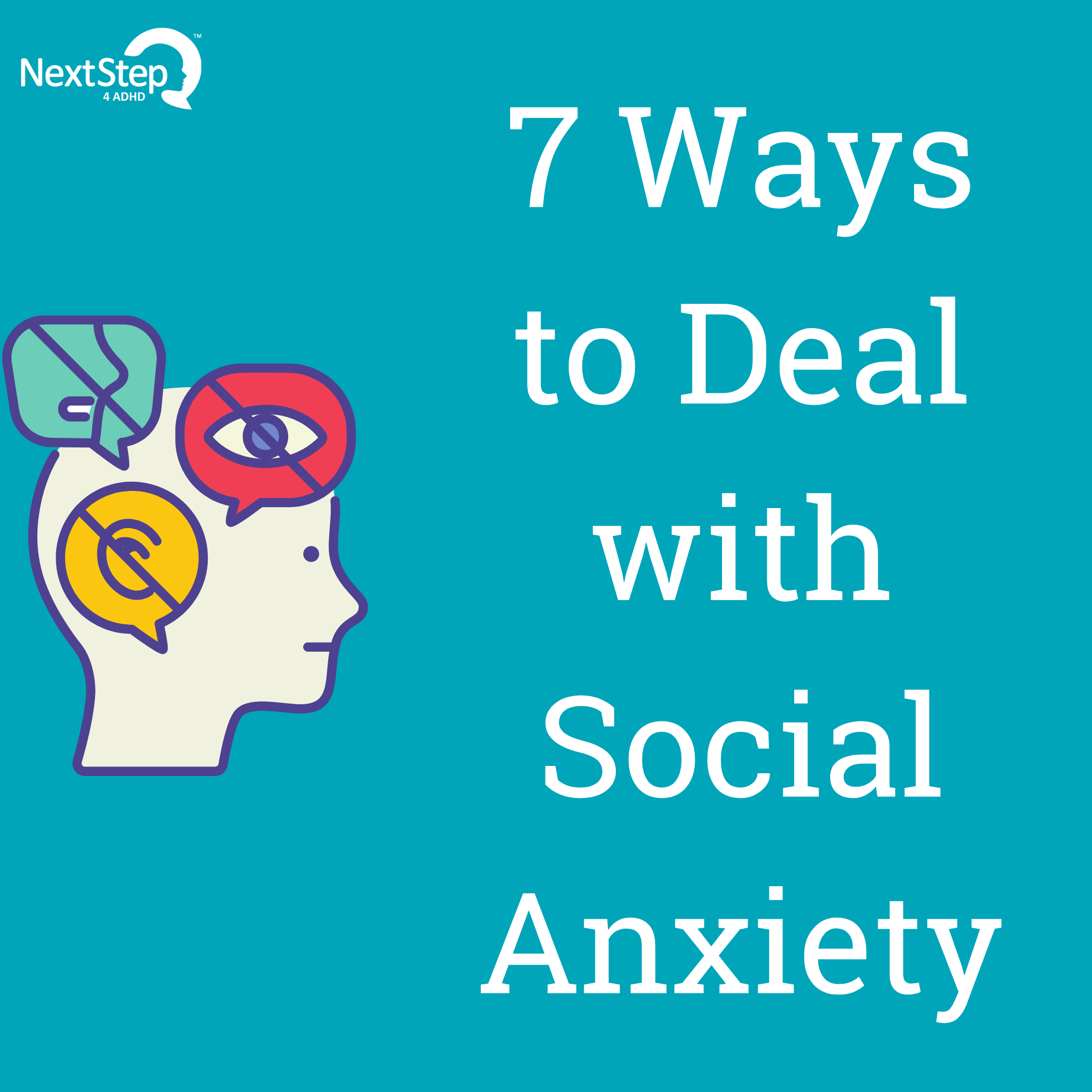
7 Ways to Manage Social Anxiety
Did you know that social anxiety is just one type of anxiety? There are five different anxiety disorders: generalized anxiety disorder (GAD), obsessive-compulsive disorder (OCD), post-traumatic stress disorder (PTSD), panic disorder, and social anxiety. Social anxiety, like other forms of anxiety, is characterized by intense worry. In the case of social anxiety, anxiety symptoms are heightened in everyday social situations.
At the Next Step, our team of experts is experienced in diagnosing and treating all types of anxiety. If you experience any of the symptoms of anxiety, we encourage you to visit us so can get the relief you need.
In the meantime, here are seven ways you can manage social anxiety.
1. Try Deep Breathing
Deep breathing exercises can help you reap the benefits of slow, steady breathing. Deep breathing exercises focus on deep breaths from your diaphragm. This is a useful skill as these exercises can also help relax your mind and body in uncomfortable social situations.
To explore two types of deep breathing, watch the video below. We’ll focus on triangle breaths and squares breaths.
WHY IT WORKS
Deep breathing triggers your parasympathetic nervous system and shifts your body away from flight or fight mode. Your parasympathetic nervous system is sometimes called the “rest and digest” system. So when this nervous system is stimulated, your body feels relaxed.
And when your body feels relaxed, your mind also feels relaxed, which can help you cope in social settings.
2. Spot Negative Thoughts (and Create Alternative Thoughts)
Dr. Dan Guy shares the first step to overcoming anxiety: “You’ve got to overcome the ANTS, or automatic negative thoughts.”
Automatic negative thoughts are automatic (and faulty) patterns of thinking can make social anxiety symptoms worse. There are many different types of negative thought patterns, including mind-reading, fortune-telling, and blame.
An ANT could sound like this:
- “Everyone here at this party knows how anxious I am.”
- “The whole restaurant is annoyed that I walked in here. They are all staring directly at me. ”
Negative thought patterns can be very bothersome, and unfortunately, they can become automatic. You can work to identify and overcome negative thought patterns, though. You can overcome negative thoughts by identifying them — and then coming up with alternative thoughts. For example, “Everyone is not ignoring me because I was late. They are simply engrossed in the speaker at the event.”
3. Learn to Face Your Fears
Avoiding social situations might temporarily reduce social anxiety, but in the long run, avoidance can severely impact your quality of life. Learning to face your fears can help you learn to cope so that you can enjoy social outings. If fear of public speaking is on your list, explore ways to face this fear in small, controlled settings. For example, you might volunteer to read the instructions out loud at a family game night. This is a smaller step and much more manageable than jumping into karaoke night with strangers.
There are many little things you can do on a daily basis to help you manage social anxiety. For example, arriving at dinner (or a meeting) early allows you time to mentally prepare. This also gives you the opportunity to greet friends (or co-workers) one at a time as they arrive.
4. Practice Self-Care
Self-care goes a long way in supporting your mental health. This includes:
- Eating a well-balanced diet
- Getting quality sleep each night
Researchers found that inadequate sleep can increase feelings of loneliness and make it harder to connect with others. Aim for 7-9 hours of sleep each night, especially before a big event. A solid diet can support your mood, energize you, and help you avoid blood sugar crashes.
5. Exercise
If you have social anxiety, exercise is helpful in a few ways. Exercise can:
- Relax you
- Boost your mood thanks to endorphins
- Provide an opportunity to practice social skills
- Supports your frontal cortex and strengthens your executive function skills (which then helps you deal with real or potential threats)
Bonus: Exercise in nature, if you can. Studies show that the combination of exercise and nature provides even more anxiety-reducing effects.
6. Learn about Social Anxiety
If you or a loved one struggle with anxiety, it’s important to learn as much as you can about the topic. You can
- Read books (here’s a list of anxiety books recommended by the American Anxiety and Depression Association)
- Take an online course (we have one that covers the link between anxiety and ADHD)
- Talk to your mental health care provider
Tip: Reading about anxiety can help you learn more about the condition, but even the act of reading can help you relax. Reading can relax your calm, reduce your heart rate, and ease the tension in your muscles. Researchers from the University of Sussex determined that reading can reduce stress levels by nearly 70%, according to a 2009 study. It works better and faster than other relaxation methods, like listening to calming music. Although, you can pair hot tea, calming music, and reading for a great relaxing activity.
7. Seek Help When You Need It
Even if you implement these strategies for reducing anxiety, you still might benefit from professional help. Remember, asking for help is never a sign of weakness. Here at Next Step 2 Mental Health, we provide comprehensive and compassionate anxiety treatment — no matter which type of anxiety you have. Whether you’ve been struggling with anxiety for years or current events have triggered your anxiety, we can help you feel better.
Give us a call at our Louisville, Kentucky office at 502-339-2442, or send us a message to request more information.
You can also click here to request an appointment with our convenient scheduling tool here.
References:
- https://www.hhs.gov/answers/mental-health-and-substance-abuse/what-are-the-five-major-types-of-anxiety-disorders/index.html
- https://www.sciencedaily.com/terms/parasympathetic_nervous_system.htm#:~:text=The%20parasympathetic%20nervous%20system%20is,muscles%20in%20the%20gastrointestinal%20tract.
